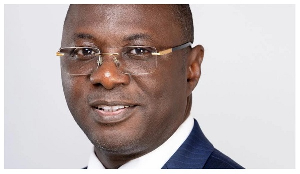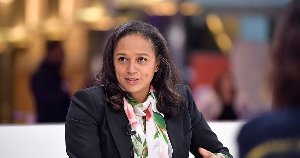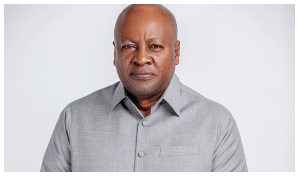Ghana currently has twelve (12) national public universities, ten (10) public technical universities and forty-six (46) public colleges of Education together with 100 private tertiary institutions offering HND/degree programmes.
These tertiary institutions have over the years trained professionals and technocrats to feed the nations pool of workforce who serve the various sectors of the economy.
Nevertheless, the number of senior high school (SHS) graduates keeps increasing every year while little is done to increase the capacity of these tertiary institutions so they can sufficiently absorb the teeming number of SHS graduates.
Those who are even admitted struggle to get accommodation as halls of residence are not able to contain them. This leaves them at the mercy of hostel operators who charge exorbitant fees.
For this reason, most tertiary institutions in Ghana have had the unpleasant task of having to turn away a large number of equally qualified applicants every year as a result of their inability to admit more than a third of these applicants.
This makes access limited to only a few minority. It will be impossible for universities to use only traditional classroom-based teaching and learning to meet the escalating demand for higher education and professional development.
It is in recognition of the aforementioned inadequacies that Distance Education has been implemented as a feasible complement to the conventional mode of teaching and learning.
The mission of Ghana’s Distance Education programme is to make education at higher levels easily accessible and relevant to meet the learning needs of every Ghanaian so as to enhance their professional capability and improve the quality of their lives.
This is in fulfilment of the vision of making education accessible to every Ghanaian regardless of where they live and irrespective of the mode of delivery.
The Free Senior High School (SHS) policy introduced by the Akufo-Addo government in 2017 will produce the first batch of graduates in September this year (2020).
The introduction of the Free SHS policy in 2017 occasioned an increase in admission by 33.2% as stated in the 2018 GoG budget.
This has led to an increase in the number of students completing SHS this year which will further heighten the number of persons who will be seeking higher education admissions after.
The Minister of Education in charge of Tertiary, Professor Kwesi Yankah once stated that, "about 145,000 students are expected to be seeking admissions into various universities this year."
This has the propensity of compounding the already existing infrastructural inadequacies that have resulted in the inability of tertiary institutions to admit many qualified applicants.
Because of this expected increase, Prof. Yankah said that “the ministry of education was encouraging tertiary institutions to vigorously embark on infrastructural expansion to meet the expected “avalanche” after a meeting with vice-chancellors and representatives of the private university colleges.
He also said he has met with the various councils of the technical universities and explained the issue to them and urged their respective universities to rise to the occasion”. The above assertion was reported in the 2nd October 2018 edition of the Daily Graphic.
These efforts by the ministry of education are laudable. However, there are other prudent measures that can be embarked on to help kerb these annual admission deficits, especially as we expect an increase in SHS graduates this and subsequent years because of the Free SHS.
I believe a robust Distance Education is a prudent solution to the impending problem of increasing numbers of SHS graduates seeking admissions into tertiary institutions.
Distance education can help solve the challenges facing conventional education by tackling the primary problems of space and infrastructure as well as widening access to tertiary education.
Distance education should not be seen as a marginal educational pursuit. Instead, it should be an effective way of providing new opportunities in higher education for the masses that otherwise would have had no access to tertiary education.
Revamping distance education demands that certain critical policies and strategic planning be made to close apparent gaps between it and regular studies.
Such planning could be done well if challenges confronting distance education are identified and addressed. This article explores few challenges facing distance education that the education ministry and tertiary institutions can pay attention to.
1.Course content and contact hours should be as rigorous as regular studies. Course content should be fine-tuned to enhance its overall quality so it reflects what is taught in regular studies.
2.The Government should provide adequate financial support in the form of loans to distance education students. This is essential because distance education students are also citizens who contribute directly or indirectly to the country. Such a loan facility will help students who have difficulty paying their bills and other responsibilities do so.
3.Counselling consists of one of the major non-academic support where guidance, assisting students with their issues and offering directions take place. There is therefore the need to establish counselling units in all the study centres and also employ professional counsellors to attend to the needs of students.
4.Qualified lecturers should be employed to teach distance education just as it is done on campuses. Some universities do not employ the right tutors to teach distance education students and this affects content delivery. Teachers who are experts in the various courses should be allowed to teach instead of employing just anyone because of cheap labour. Will these teachers who teach distance education students be allowed to teach the same subjects in a regular class on campus?
5.Additionally, emphasis should not be on teaching alone but communication channels and strong students’ forum should also be improved as a way of enhancing students’ social development as they take part in the distance education. There should be student representatives on all distance education centres who will represent distance education students at the highest level of decision making in universities.
Other drawbacks that merit consideration include cost and capital intensity involved, time constraints and pressure on institutions who are running campus education concurrently, and dropout rates which are higher than that in conventional education.
Conclusion
Maintaining the progress of the Free SHS and its relevance to professional development of Ghanaians will not be sustainable without holistically looking at how to absorb graduates from the free SHS into tertiary institutions that are already struggling with infrastructural deficits.
If the government is truly interested in educating the populace to increase the literacy rate of citizens and improve their quality of lives, then the free SHS should not just end at SHS with graduates not having equal opportunity to further their education.
Critical attention and support must be committed to revamping distance education to make it as attractive as regular campus education. We shouldn’t pride ourselves in free SHS gains if we can’t give equal opportunities to all SHS graduates to further their education as we gave all of them free SHS education.
Click to view details



Opinions of Saturday, 18 July 2020
Columnist: Solomon Ansong



















